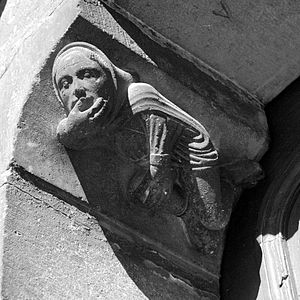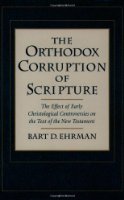*
A Crucified Messiah
COVERED IN THIS POST:
- Jesus and David Koresh
- Was a crucified criminal believed to be the messiah?
- Ehrman’s “story” of a resurrection
- A story missing in Q and the epistles
- The actual picture in the epistles
- Did Jews invent a crucified messiah?
- Did Jews anticipate a suffering messiah?
- The sources and nature of Paul’s new messiah
- Ehrman’s summary of his evidence with summary responses
.
* * * * *
The Crucified Messiah
(Did Jesus Exist? pp. 164-174)
.
Jesus as an ancient David Koresh
At the end of our last instalment, Bart Ehrman told of putting a question to his university students:
What if I told you that David Koresh of the Branch Davidians, attacked and killed some years ago in Texas by the FBI as a dangerous rebel, was really God’s Chosen one, the Lord of all? (DJE? p. 163)
He was making the point that for the followers of Jesus to declare that a man who had just been executed as a rebel was really God’s prophesied messiah would indeed have been equivalent to survivors of the Branch Davidians making a similar declaration of David Koresh today.
Ehrman is now faced with a major challenge. He must answer the question: How could any Jew judge a man who fulfilled none of the expectations the nation held about the messiah, a man whom society would have regarded as a “crucified criminal,” ignominiously despatched by the very overlords he was supposed to overthrow, to be the fulfillment of all those prophecies in scripture about God’s agent for Israel’s salvation?
The traditional Christian answer and Ehrman’s “story” substitute
Ask that question of an evangelical Christian today and you will get a stock answer: the actual resurrection of Jesus convinced his followers that he was God’s Son and Messiah. I suppose if I had been around at that time and saw a dead man walk, I too would have let that override whatever negative reaction I had to seeing him die on the cross. But Ehrman hasn’t allowed himself that option. And yet, he appeals to much the same thing, just a weaker version of it.
If it is hard to imagine Jews inventing the idea of a crucified messiah, where did the idea come from? It came from historical realities. There really was a man Jesus. Some of the things he said and possibly did made some of his followers wonder if he could be the messiah. Eventually they became convinced: he must be the messiah. But then he ran afoul of the authorities, who had him arrested, put on trial, and condemned to execution. He was crucified. This, of course, radically disconfirmed everything his followers had thought and hoped since he obviously was the furthest thing from the messiah. But then something else happened. Some of them began to say that God had intervened and brought him back from the dead. The story caught on, and some (or all—we don’t know) of his closest followers came to think that in fact he had been raised. This reconfirmed in a big way the hopes that had been so severely dashed by his crucifixion. For his reinspirited followers, Jesus truly is the one favored by God. So he is the messiah. But he is a different kind of messiah than anyone expected. God had a different plan from the beginning. He planned to save Israel not by a powerful royal messiah but by a crucified messiah. (DJE? p. 164)
So now instead of an actual resurrection, with followers seeing Jesus again in the flesh and placing their hands upon him to confirm that he was indeed alive, Ehrman posits a “story” of a resurrection which “caught on.” I’m not so sure that I myself, back then, would have been convinced by a ‘story.’ It hasn’t got quite the same force as actually seeing the dead live, right in front of you. Maybe getting a sworn assurance from someone else who actually did see the dead man alive again might have substituted. But a ‘story’? And what did that story say? That he had actually been seen in the flesh? Or that he had been taken up to heaven immediately, leaving no witnesses behind? Was it a resurrection in flesh, or one in spirit? Did the story offer any proof? Ehrman does not say. Continue reading “22. Earl Doherty’s Response to Bart Ehrman’s Case Against Mythicism – Part 22”




